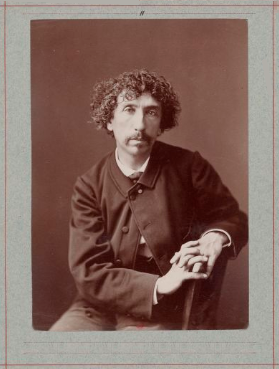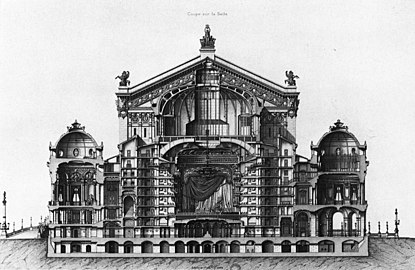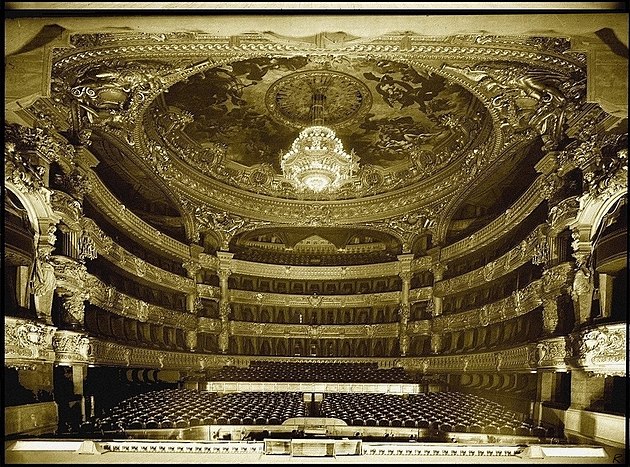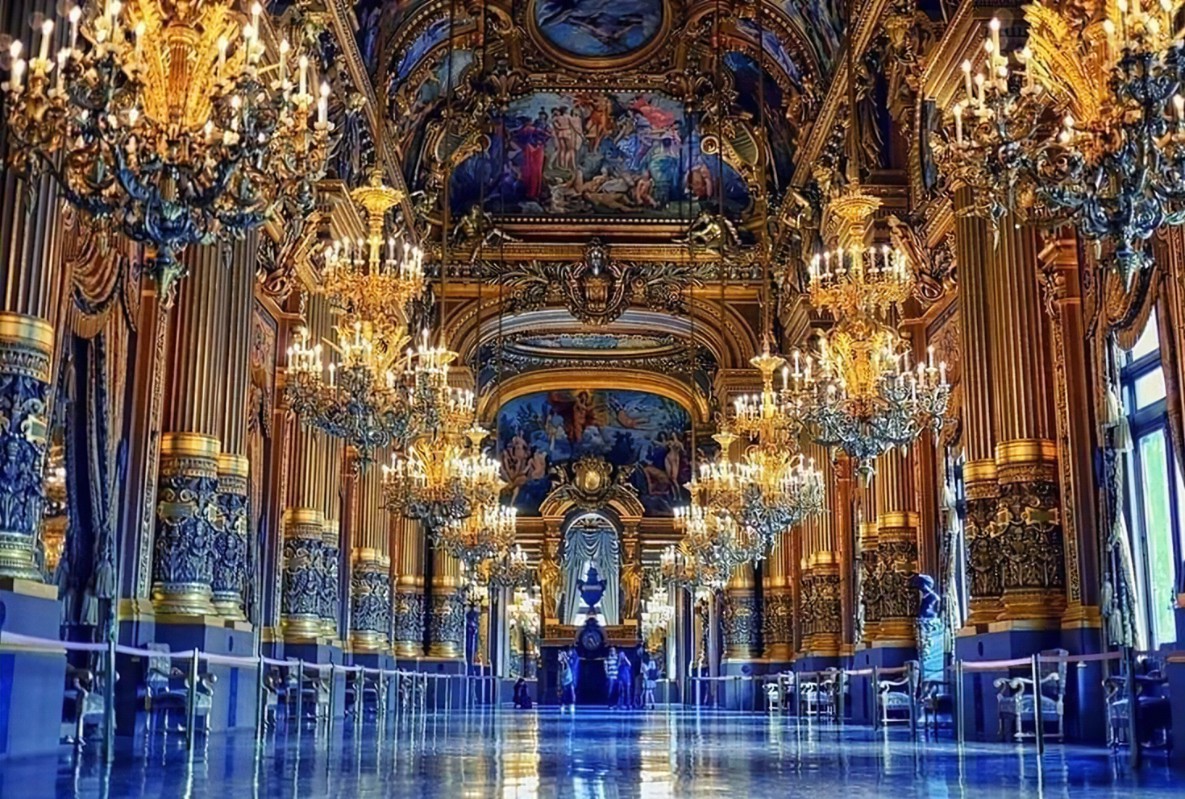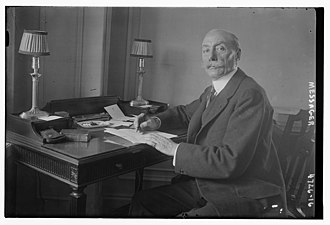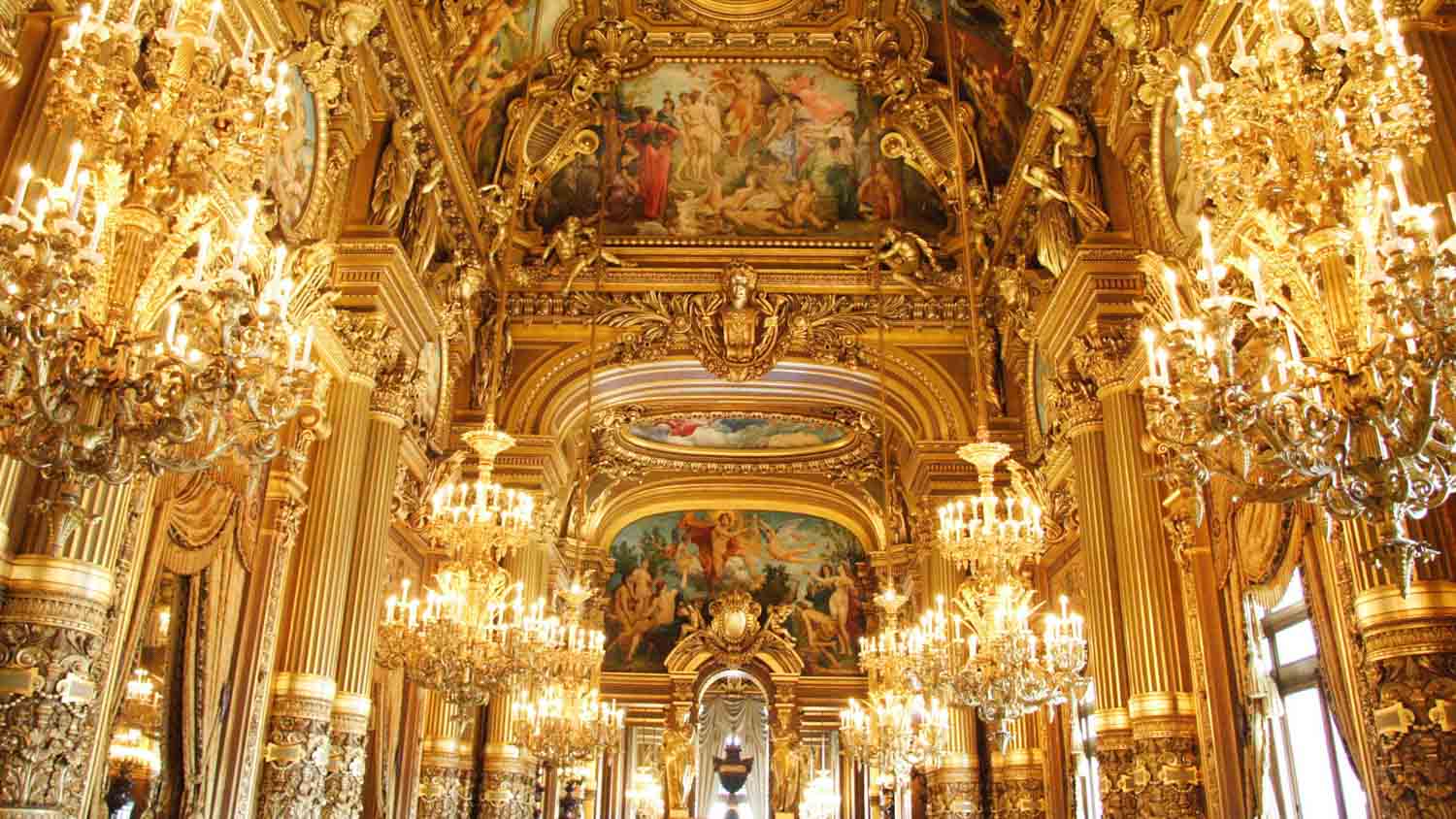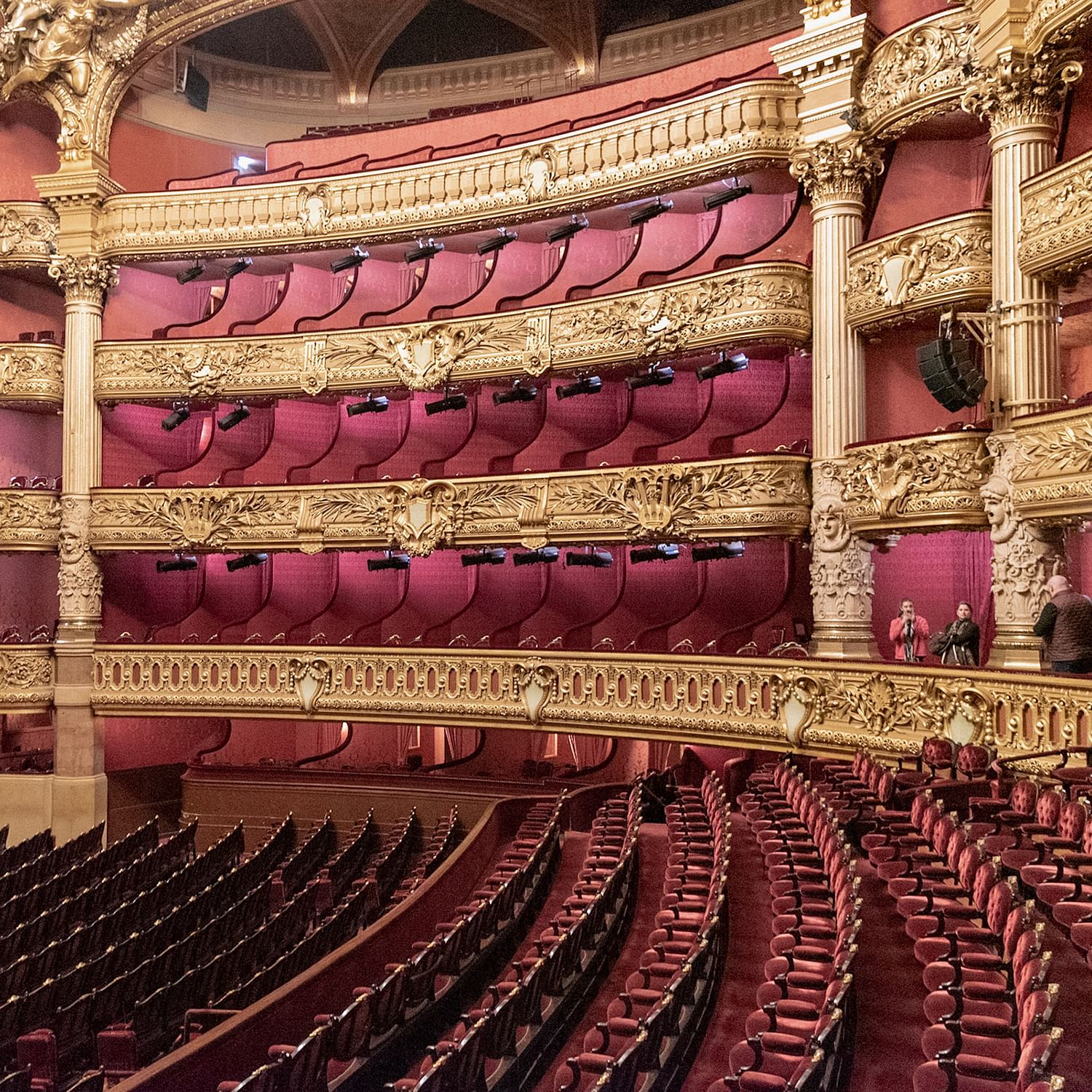Presentation
The Opera Garniera, or Palais Garniera, is a national theatre that aims to be an academy of music, choreography and lyric poetry; it is a major element of the heritage of the 9th arrondissement of Paris and the capital. It is accessible by metro (Opera station), RER (line A, Auber station) and bus. On a design by the architect Charles Garnier its construction, decided by Napoleon III.The building was inaugurated on 5 January 1875 under the Third Republic.
It is now referred to by the name of its architect alone: "Opera Garnier" or "Palais Garnier". The two operas are now grouped together within the public industrial and commercial establishment "Opéra national de Paris". The Opera Garnier has been classified as a historical monument since 16 October 1923.
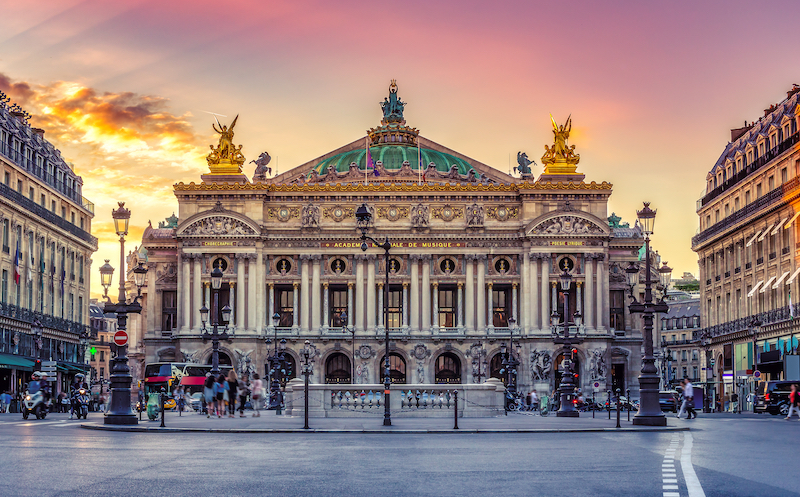
Inauguration
Work was interrupted due to the Franco-Prussian War of 1870. The unfinished buildings were requisitioned to store food for the military and straw for the horses. The defeat of Sedan, in 1870, provoked the fall of the Empire, the military occupation of the capital and led to the episode of the Paris Commune of 1871. The advent of the provisional government of Thiers, then of the Third Republic, did not change the situation. If, at first, the economic difficulties of the France do not allow to continue the excessive expenses incurred for the future opera, it is then and above all for the symbol it represents and the embarrassment it creates among the new elites that one hesitates to take the decision to complete the commission of a discredited regime. We do not know what to do, except to dismiss Garnier and continue to use the room of the rue Le Peletier.
On October 28, 1873, the old opera house on Rue Le Peletier — which had served as a temporary opera house in Paris since 1821 — was destroyed in a fire. The architect was recalled to complete the construction of the new Opera House; But he struggles to bring together his scattered collaborators, companies and all the craftsmen who have just gone through a period of uncertainty. Disappointments will arise: the increase in the cost of raw materials, the disappearance of artists leaving unfinished models, unrespected plans with irreparable decorative consequences.
The inauguration took place on Tuesday, January 5, 1875 in the presence of the President of the Republic Mac Mahon, the Lord Mayor of London, the Mayor of Amsterdam, the Royal Family of Spain and nearly two thousand guests from all over Europe and elsewhere. The program includes:
- opening of La Muette de Portici d'Auber;
- the first two acts of Halévy's La Juive with Gabrielle Krauss as Rachel;
- opening to Rossini's William Tell;
- the scene from The Blessing of the Huguenots' Daggers by Giacomo Meyerbeer;
- La Source, ballet by Léo Delibes.
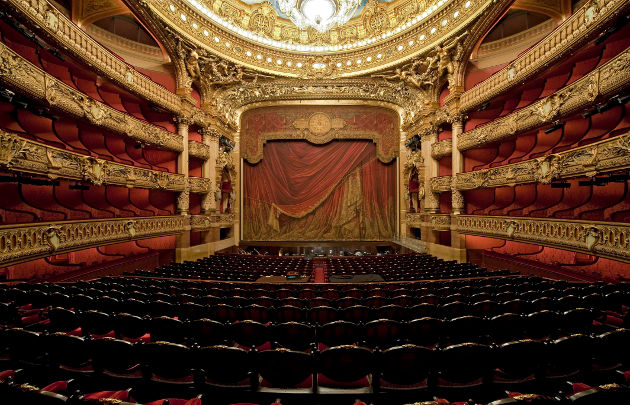
Charles Garnier would have been invited (sources differ on this point). He must pay for his place in a second box. This incident, particularly regrettable and moreover mocked by the press of the time — "an administration making the architect pay the right to attend the inauguration of one's own monument! —, expresses a rejection of the new rulers towards those who, directly or indirectly, served the deposed emperor, who died in 1873, and the usual ingratitude of the powerful towards artists.
On February 7, it is the masked and transvestite ball of the Opera, annual event of the Carnival of Paris, it brings together eight thousand participants37. The last edition of this ball, created in 1715, will take place there in 1903.
In October 1896, on the occasion of their visit to France, the Russian Tsar Nicholas II and his wife Alexandra went to the opera, where they attended a performance with the President of the Republic Felix Faure. When they left the Place de l'Opéra, around fifteen midnight, a large crowd cheered the imperial couple38.

GLOBAL ASPECT
On a more general aspect, the Opera Garnier is a prestigious and convivial place that aims to share works, magical moments and all this in a beautiful and lively space. The Paris Opera invites you to discover, during a self-guided tour, the riches of the public spaces of the Palais Garnier, a masterpiece of nineteenth-century theatrical architecture. This admission ticket also gives you access to temporary exhibitions if applicable.
Works created at the Opera
Lyrical works
- 1878 : La Reine Berthe103 de Victorin de Joncières ;
- 1883 : Henry VIII de Camille Saint-Saëns ;
- 1890 : Ascanio de Camille Saint-Saëns ;
- 1894 : Thaïs de Jules Massenet ;
- 1900 : Lancelot103 de Victorin de Joncières ;
- 1901 : Les Barbares de Camille Saint-Saëns ;
- 1909 : Monna Vanna d'Henry Février ;
- 1923 : Padmâvatî d'Albert Roussel ;
- 1931 : Guercœur d'Albéric Magnard ;
- 1932 : Un jardin sur l'Oronte ;
- 1983 : Saint François d'Assise de Olivier Messiaen ;
- 2009 : Yvonne, princesse de Bourgogne de Philippe Boesmans.
Choreographic works
- 1886 : Les deux pigeons d'André Messager ;
- 1928 : Boléro de Maurice Ravel ;
- 1928 : Le Baiser de la fée d’Igor Stravinsky ;
- 1931 : Bacchus et Ariane de Roussel ;
- 2003 : La Petite Danseuse de Degas.
